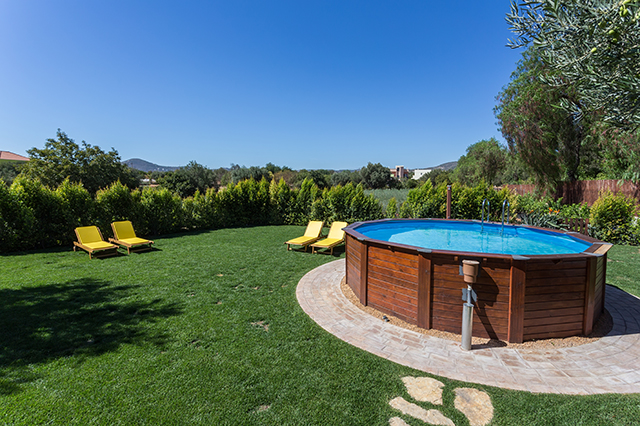If you’re considering some pool landscaping on your property, be prepared to go over the details with the agent in charge of your homeowners insurance policy – there will be some changes from your existing pre-pool policies.
Several factors will need to be taken into account beyond the aesthetics of your new pool, such as local laws, the type of pool you’re putting in, and the increased liability you face as a result of having a pool.
The pool is considered an “attractive nuisance,” which is defined as an object likely to attract a child and pose a risk to his or her well-being.
That said, the results from good pool landscaping can not only fill your life with the joy of getting to splash around but will also provide a functional centerpiece to your backyard.
In-ground pool coverage
With an in-ground pool, you first need to establish if your homeowners insurance policy considers it part of the home or if it’s categorized as an extraneous structure. Depending on the company’s definition, this will either affect your property limit or the replacement cost value of your policy.
If the cost of the pool is added to your replacement cost value, it will increase the cost of your home insurance premium. However, if the pool landscaping is considered as an extraneous structure, it needs to be declared and listed. At this point, you need to do the math and decide if the pool is adequately covered by the standard payout for external structures, which is about 10 percent of the replacement cost of the house.
Though in-ground pools rarely suffer from wind, water or fire damage, they can be susceptible to falling trees, which is one of the perils your homeowners insurance should cover. However, damage caused by failure to properly maintain your pool landscaping will most likely be excluded from your policy.
Above-ground pool coverage
While an in-ground pool is likely to be categorized as part of the house, an above-ground pool is much more likely to be considered personal property. If this is the case, check to make sure that it will be possible to replace your pool with the current claim limit offered. This is important, as above-ground pools are much more susceptible to damage from inclement weather and fire.

Liability insurance
As an attractive nuisance, your pool will introduce an entirely new type of liability to you as a homeowner. On average, 390 kids drown each year in U.S. pools every year. Those statistics combined with the number of non-fatal incidents has to lead many pool owners to take out additional liability insurance.
Even if someone is trespassing when they use your pool, you are legally liable for their welfare, which means you could be stuck footing expensive medical and legal bills connected to an incident. The standard liability protection that comes with most homeowners policies will provide $100,000 in coverage.
However, the Insurance Information Institute recommends a homeowner with a backyard pool to increase the limit to $300,000 or $500,000.
If you are in an area where it seems likely that children will take advantage of the pool without your knowledge, you should consider buying a personal umbrella policy. This policy kicks in after underlying insurance limits have been reached and usually provides up to $1 million in additional coverage.
Laws for safety plus exceptions
The U.S. Consumer Protection Safety Commission recommends installing a fence that is at least 4 feet tall around the pool or your property. The fence should be equipped with gates that are self-closing and self-latching.
The importance of barriers cannot be overstated. The Centers for Disease Control and Prevention, states that a four-sided isolation fence (one designed only to limit access to the pool) reduces a child’s risk of drowning 83 percent compared to three-sided, property-line fencing.
Failure to comply with municipal, village or county laws requiring you to enclose your pool, your property or both with a fence, could lead to the exclusion of your pool from your insurance policy. Nearly all cities and towns in the U.S. have laws with regards to swimming pools, so make the necessary phone calls to ensure you are compliant.
Understand your homeowners insurance before putting in a pool
By talking to your insurance agent about your homeowners insurance and the policies of the company before putting in a swimming pool, you’ll be able to have a better grasp of the costs of your premiums and the increased liability you face as a homeowner.
Though increasing liability insurance will most likely be a smart move, the smartest move is also to ensure that you take the necessary steps to prevent injuries to those using your pool – with and without permission. One of the easiest and safest ways to do this is by building an isolation fence around the pool.
Thinking of putting in a pool and worried how it would impact your homeowners insurance? Tell us all about it in the comments below.
Click here to learn more about AAA home and condo insurance in your state.
One Thought on “Pool Landscaping: How Does Homeowners Insurance Fit in?”
Leave A Comment
Comments are subject to moderation and may or may not be published at the editor’s discretion. Only comments that are relevant to the article and add value to the Your AAA community will be considered. Comments may be edited for clarity and length.














Yikes, who knew about this ? Yikes